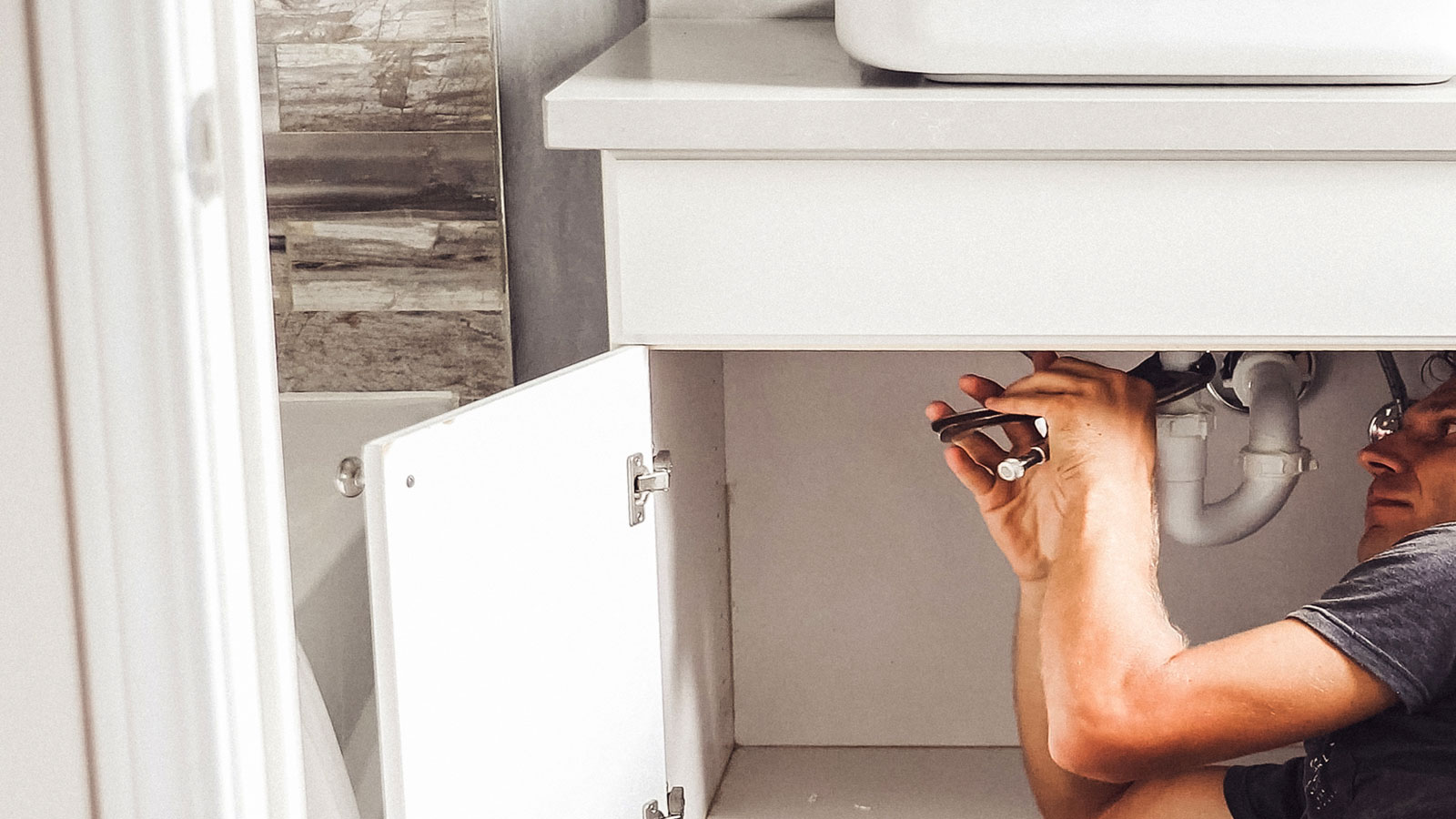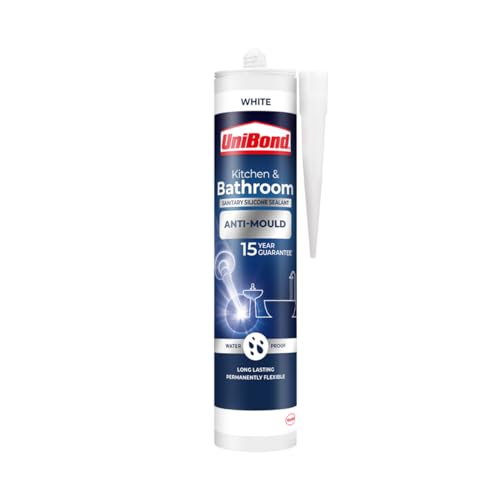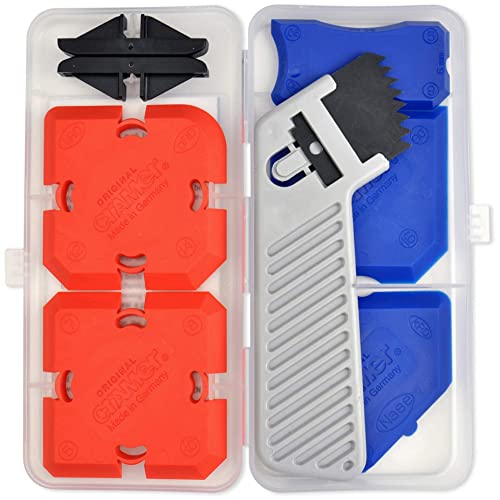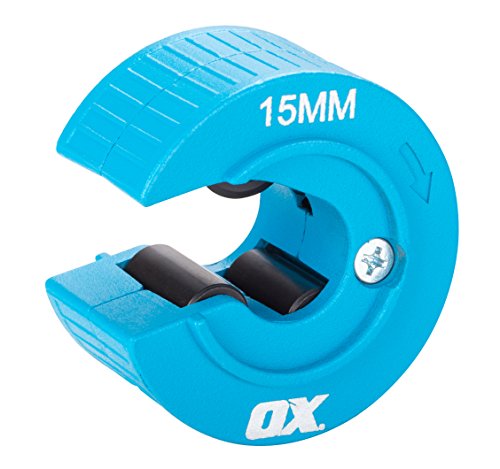7 steps to a successful DIY bathroom sink installation
If you're considering taking on your bathroom sink installation yourself, follow this expert guide to ensure a good fit and finish

If you're considering replacing your bathroom sink, once you've chosen the type of sink you want, bathroom sink installation will enhance the function and form of a space, but only if done correctly. A poorly installed bathroom sink will look shoddy and more than likely leak, leading to more unwanted issues.
A confident DIYer who’s tackled simple plumbing tasks before should have enough know-how to follow this guide to get the job done. And if it's part of a wider remodel, knowing how to install a bathroom sink will help keep the costs. And who doesn’t like to save money on a project?
Here you’ll find pro tips on how to get the job done and what tools you'll need to make it happen.
Bathroom sink installation: Factors to consider first
If you’re looking to add a new sink in your bathroom you need to think ahead to gauge which will work in your space. Nancy Emery, Bathroom Expert at Drench points out, “the right bathroom sink for your home will largely depend on the layout of your current bathroom.”
If you have a small bathroom you should think about your bathroom sink size. While small bathroom sink ideas will work in smaller spaces, but if you have a larger bathroom you can think bigger. “If you're fitting a basin in a cloakroom," advises Nancy, "you'll want something small and compact. If you're fitting a sink in a large family bathroom, you'll have a much greater range of sizes to choose from.
“If you're looking to install a countertop basin, also pay close attention to the size of your vanity unit to ensure the basin will fit,” she adds.
On the more practical side you will equally need to check your pipework. Will the new bathroom sink fit directly to the current setup or will you need to adjust to make the new bathroom sink fit? This will add to the overall cost of the installation.

Nancy is a homes expert with more than 17 years of experience in the lifestyle sector, particularly the homes & interiors industry. She has represented Drench as a bathroom expert for the last two years.
The tools needed to install a bathroom sink
There are a number of tools involved when installing a bathroom sink. To ensure the installation goes smoothly, Derek Aaronson, CEO of Hart Home Group suggests you’ll need the following and why:
- Adjustable wrench or spanner – These are your go-to for tightening up bolts and nuts
- Basin wrench – Like this HAUTMEC 11-Inch Pro Basin Wrench from Amazon – This is a lifesaver for those awkward spots under the sink
- Pipe wrench – For gripping and turning pipes like a pro
- Plumbers putty or silicone sealant – To make sure everything is watertight
- Pipe cutter or hacksaw – Just in case you need to trim any pipes to fit
- Tape measure – Because precision is everything
- Level – Like this Stabila 70 Single Plumb Box Section Spirit Level Set from Amazon – to make sure your sink isn’t wonky.
- Screwdrivers – Both flathead and Phillips, depending on what screws you’re dealing with
- Bucket and towels – For those inevitable water spills (because it will happen)

Derek Aaronson is the CEO of Hart Home Group, which includes three retail websites; Notjusttaps, Lime Kitchen and Bathroom and Hart Plumbing Spares. Derek set up the business over 10 years ago and it is has since become a fast-growing company that’s passionate about plumbing.
Try these tools to help fit a bathroom sink

Anti-mould sealant that forms a permanently flexible, mould resistant, waterproof bond, ensuring strong seals, making it ideal for bathrooms.
7 steps to bathroom sink installation
1. Get prepped
Before you start you need to stop the flow of water. “First things first, turn off the water supply and drain down the system ensuring the taps run dry (nobody wants an unplanned indoor fountain)," says Derek Aaronson
If you’re replacing an old sink, get that out of the way and clean up the area,” he adds. If your pipes have isolation valves like these Pipestation 15mm Isolation Valves from Amazon, use a screwdriver to move the screw to a horizontal position.
If you don’t have isolation valves installed, Derek suggests you consider adding them. “It’s a good idea to fit isolation valves on both the hot and cold lines. They make future maintenance a breeze since you won’t need to shut off the whole water supply.”
2. Attach tap and drain
When installing a bathroom sink, Derek says, “it’s easier to attach the faucet and drain before you even put the sink in place.” Adding, "trust me on this – it’ll save you some backache later.”
3. Position the sink
Now it's time to put the bathroom sink into place. “Pop the sink onto your countertop or vanity. Check it’s centred and level before securing it,” says Derek.
4. Hook up the water lines
Once the sink is secured in place it needs to be connected to the water supply. "This is where flexi tails (like these Haiba Kitchen/Basin Monobloc Mixer Tap Connectors Flexi Pipes from Amazon), come in handy," says Derek. "They’re super easy to connect, so definitely use them if you can.” Just make sure they are long enough for what you need.
5. Sort out the drain
With the water supply in place the next step is to sort out the waste. “Assemble the P-trap (that curvy pipe bit) and connect it to the drainpipe," says Derek, "but make sure everything’s tight and secure, leaks are no fun.”
6. Test it out
To make sure you have no leaks you need to switch the water supply back on. Derek advises, “run the taps, and keep an eye out for any drips. If you spot a leak, give those connections another tighten.”
7. Finishing touches
To finish a bathroom sink installation you often need to seal around the edges. “If needed, use a silicone sealant around the edges of the sink or drain to secure a watertight seal and prevent any leaks or moisture from seeping through,” suggests Derek. Check out our sealing a bath guide for tips on how to apply sealant.
FAQs
What is the easiest bathroom sink to install?
As a general guideline, certain types of sink are easier to install. Nancy Emery says, “overall, a wall mounted or pedestal sink has less challenges to installation, than say a countertop or vanity unit basin.”
A straight like-for-like replacement is typically the easiest to install as there will be little pipework adjustment. However, if your DIY skills aren’t up to scratch you should call in a pro. A point Nancy reinforces. “Installing any bathroom sink is probably a job for a plumber, it shouldn’t take long or cost too much so long as it’s a straightforward replacement.”
How much does a new bathroom sink cost?
The price of a bathroom sink can vary greatly depending on size, purpose, quality and brand. Pedestal sinks like this Nuie Ivo Basin from Victorian Plumbing start at around £60 for a more basic model, but you can easily pay over £500 for larger designer sinks.
Smaller cloakroom sinks like this Nes Home Bathroom Wall Hung Cloakroom Ceramic Compact Basin from B&Q are typically slightly cheaper due to their size. As a general rule most types of bathroom sink start at around £60-£100.
If you’re looking to change your bathroom sink, it's a good time to think about changing other elements of the space. Check out these 20 bathroom design Ideas, bathroom lighting ideas and amazing bathroom tile ideas for small bathrooms.
Get the Homebuilding & Renovating Newsletter
Bring your dream home to life with expert advice, how to guides and design inspiration. Sign up for our newsletter and get two free tickets to a Homebuilding & Renovating Show near you.
Steve Jenkins is a freelance content creator with over two decades of experience working in digital and print and was previously the DIY content editor for Homebuilding & Renovating.
He is a keen DIYer with over 20 years of experience in transforming and renovating the many homes he has lived in. He specialises in painting and decorating, but has a wide range of skills gleaned from working in the building trade for around 10 years and spending time at night school learning how to plaster and plumb.
He has fitted kitchens, tiled bathrooms and kitchens, laid many floors, built partition walls, plastered walls, plumbed in bathrooms, worked on loft conversions and much more. And when he's not sure how to tackle a DIY project he has a wide network of friends – including plumbers, gas engineers, tilers, carpenters, painters and decorators, electricians and builders – in the trade to call upon.



